Dealing with indigestion after over-eating? Try these 4 easy-to-make TCM recipes for relief
You'll need a pot, water and the requisite Chinese herbs (fewer than six, we promise) to cook up these dietitian-approved dishes.
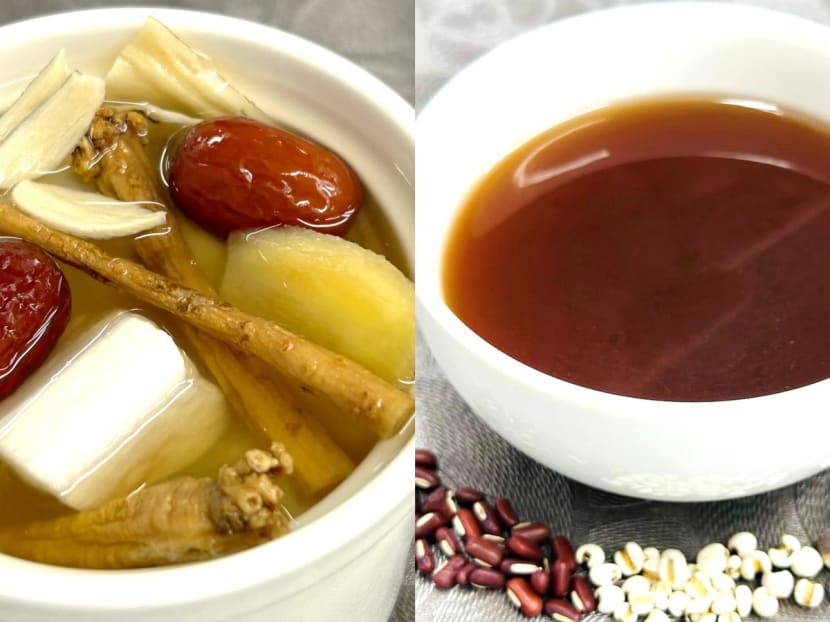
(Photos: IHH Healthcare and Parkway Shenton)

This audio is generated by an AI tool.
We’ve all been there. That uncomfortable, about-to-burst feeling in the abdomen that follows a buffet binge, finishing up leftovers on your kid’s plate, or more recently, sumptuous lohei dinners with colleagues, friends and family over the Chinese New Year period.
Many people would probably opt for plain porridge to mitigate the bloating, burping, flatulence, nausea and discomfort in the upper abdomen. But for individuals who aren't keen on yet another bowl of porridge or antacid tablets to help ease indigestion, TCM has been an alternative for some of them.
“Around 50 per cent of all my patients experience at least one indigestion symptom,” said Parkway Shenton’s senior TCM physician Anne Tian. “I do observe a 10 per cent to 20 per cent increase in the total number of patients during and after CNY due to indigestion.”
In TCM, indigestion is perceived as a disruption of the body’s balance of internal energies, said Tian. These energies, including yin and yang (opposing forces linked to various parts of the body), qi (vital energy), blood, jing (essence) and shen (spirit), are constantly interacting with external “pathogens” such as wind, cold, dampness, heat, dryness and fire.

Digestion issues can be seen as acute and chronic, continued Tian. In the acute phase, dampness, heat, cold and wind are usually involved. For instance, eating spicy food puts heat into the body, while drinking cold drinks introduces cold, she said.
In chronic indigestion, which can persist for weeks, months or even years, the symptoms are usually due to a combination of pathogens as well as internal energy stagnation and deficiencies, she said.
FOOD AS MEDICINE
Tian shared that food and herbs have nourishing, purging, moving or stagnating qualities that interact with an individual’s body constitution at a given time.
For example, if you're deficient in yang, said Tian, you should avoid “cold” foods to reduce the likelihood of developing sleepiness, poor appetite and abdominal pain. If you're lacking yin, avoid heaty food to minimise the chances of getting a dry or sore throat, insomnia and nausea, she advised.
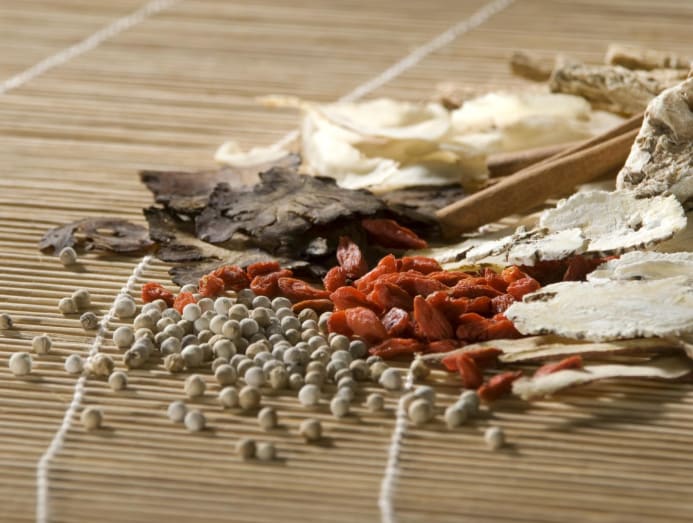
“Those with qi and blood deficiencies should avoid overeating or consuming rich and dense food to minimise the risk of fatigue, dizziness, indigestion, heat/cold/wind-related symptoms,” she said. “In general, avoid foods from the extreme ends of the temperature spectrum. Also avoid foods with extreme flavours such as overly salty, sweet, sour, bitter or spicy.”
What you do after eating plays a part, too. Sitting or lying down for more than 30 minutes can lead to qi stagnation that worsens indigestion symptoms, she said.
TCM RECIPES TO TRY
In TCM, each food or herb has its own properties, tastes (pungent, sweet, sour, bitter or salty) and effects on qi flow in the body, said Tian. When used in a formula, they take on an organised order, much like in an army.
According to her, the "commander" herbs provide the formula's primary functions and typically have the highest weightage. Then, there are the “advisor” herbs that complement the commander herbs. There are also “soldier” and “guide” herbs to boost the formula's primary functions and direct energy along the body’s specific meridians.
“Herbs are rarely used individually,” said Tian. Instead, they are usually used in pairs or more to nourish one or more of the internal energies and/or purge pathogens, she said.
The recipes below, by IHH Healthcare’s F&B and dietetic teams, are curated based on the common body constitutions seen in many patients in Singapore, said Tian.
“This is influenced by our lifestyle, which includes easy access to good food, habits of staying up late, and living in a warm and humid climate. Each recipe contains fewer than six ingredients, making them easier to digest and more efficient and economical to prepare.”
And if you're looking at the nutritional profiles of these TCM recipes, Diane Seto, a senior dietitian from Mount Elizabeth Hospital, has the breakdown below:
MILLET PUMPKIN PORRIDGE
If you can't stand another spoon-full of plain rice porridge, try this millet porridge recipe instead. According to Tian, it tonifies the stomach and replenishes the qi in your spleen, beneficial for addressing indigestion, poor appetite, bloating, burping and flatulence.
This porridge is also rich in potassium and eye-beneficial Vitamin A, thanks to the pumpkin and goji berries, said Seto. To make it a complete meal, add tofu or other protein source and serve with vegetables, she suggested. Also, goji berries inherently contain sodium, so you might want to go easy on the salt if you're hypertensive.
Nutrition per serving:
- Calories: 216 calories
- Carbohydrates: 44g
- Protein: 6g
- Fat: 2g
- Fibre: 3.1g
- Sodium: 31mg, if salt is omitted
Makes 1-2 servings:
- 3tbsp millet
- 45g pumpkin, skin removed and cubed
- 1 tbsp goji berries
- 800ml water
- Salt, to taste
To prepare:
- Pre-soak millet for at least 30 minutes.
- Add millet into 800ml boiling water. Cook for at least 20 minutes.
- Add pumpkin cubes and simmer for 10 minutes or until soft.
- At the last 2 minutes, add goji berries.
- Add salt to taste.
IMMUNITY BOOSTING SOUP
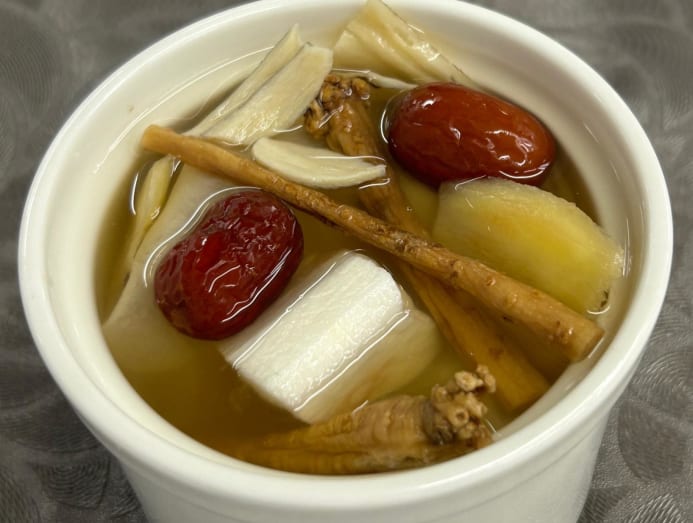
In TCM, the enzymes in saliva are generated by the spleen system, said Tian. These enzymes aid digestion in the mouth before food gets swallowed and further digested in the stomach. This soup fortifies spleen qi energy and contributes to good digestion on the whole, she added.
Nutritionally, this soup offers dietary fibre, said Seto. As for the sodium content, you can keep it low by omitting the salt and simply enjoy the natural taste of the soup. Another reason to omit adding salt is some ingredients inherently contain sodium.
Nutrition per serving:
- Calories: 78 calories
- Carbohydrates: 19g
- Protein: 1g
- Fat: 0g
- Fibre: 2.7g
- Sodium: 7mg, if salt is omitted
Makes 1 serving:
- 30g shanyao or Chinese yam, fresh
- 10g dangshen
- 10g huangqi
- 2g Chinese licorice
- 5g ginger, thinly sliced
- 2 pcs Chinese dates
- 250ml water
- Salt, to taste
To prepare:
- Pre-soak dangshen, huangqi and Chinese licorice for 20 minutes.
- Place all ingredients in a pot filled with 250ml of water.
- Bring to a boil for 40 minutes.
- Add salt to taste.
SNOW PEAR WITH WHITE FUNGUS DESSERT
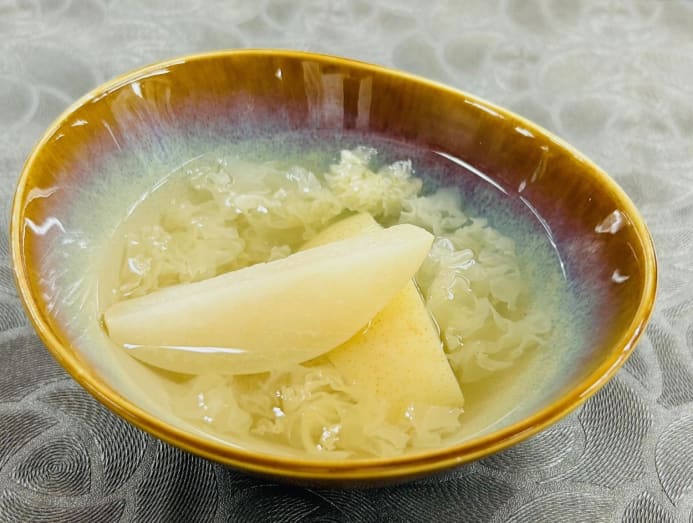
This dessert, according to Tian, nourishes stomach yin energy while it purges dampness and heat. The effects? Reduced symptoms such as dry mouth, thirst and feelings of heatiness. It can also alleviate cough and phlegm, she said, which may otherwise lead to indigestion symptoms such as decreased appetite, nausea and heartburn.
This recipe is a good source of dietary fibre, said Seto. If you wish, reduce the use of rock sugar, so that you can better enjoy the natural flavours of the pear and snow fungus.
Nutrition per serving:
- Calories: 242 calories
- Carbohydrates: 58g
- Protein: 2g
- Fat: 0g
- Fibre: 8g
- Sodium: 0mg
Makes 3 servings:
- 200g or half a snow pear or nashi pear, skin removed and cut into 3 wedges
- 6g white fungus
- 1g fritillaria bulb, crushed into powder
- 40g rock sugar
- 1,800ml water
To prepare:
- Pre-soak white fungus for an hour.
- Boil fungus for 30 minutes.
- Add snow pear and boil for 1 hour.
- Add crushed fritillaria bulb and rock sugar. Boil for 5 minutes.
RED BEAN AND COIX SEED DESSERT
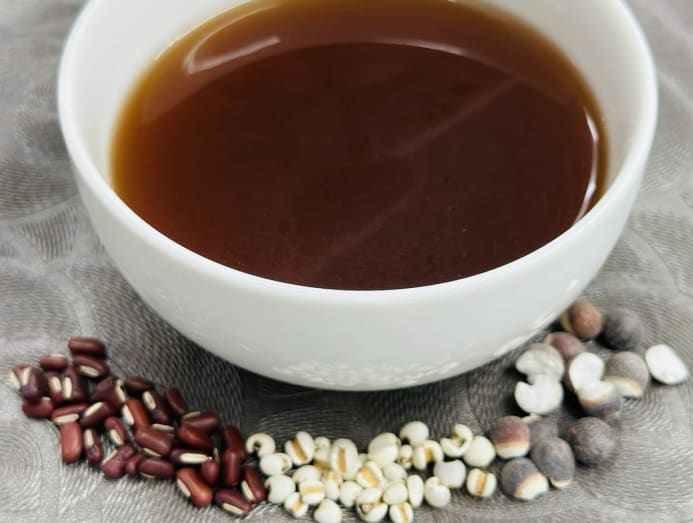
This recipe enhances appetite by eliminating dampness and heat, said Tian, which in TCM, can deplete spleen qi energy and cause stomach qi stagnation, resulting in a decreased appetite. The recipe also reduces bloating, sluggishness and phlegm, she added.
Like the snow pear and white fungus recipe, this red bean and coix seed dessert is also packed with dietary fibre, said Seto. Furthermore, coix seeds contain beta-glucans, which help to reduce blood cholesterol, she said.
You'll notice that there is still sodium even though salt is not used. That's because some ingredients naturally contain sodium.
Nutrition per serving:
- Calories: 188 calories
- Carbohydrates: 36g
- Protein: 9g
- Fat: 1g
- Fibre: 5g
- Sodium: 14mg
Makes 1 serving:
- 20g red beans
- 20g coix seeds
- 10g euryales
- 5g rock sugar
- 920ml water
To prepare:
- Pre-soak red beans, coix seeds and euryales for 2 hours.
- Boil red beans for 25 minutes.
- Add coix seeds and euryales. Cook for 30 minutes.
- Add rock sugar and cook for 5 minutes.







